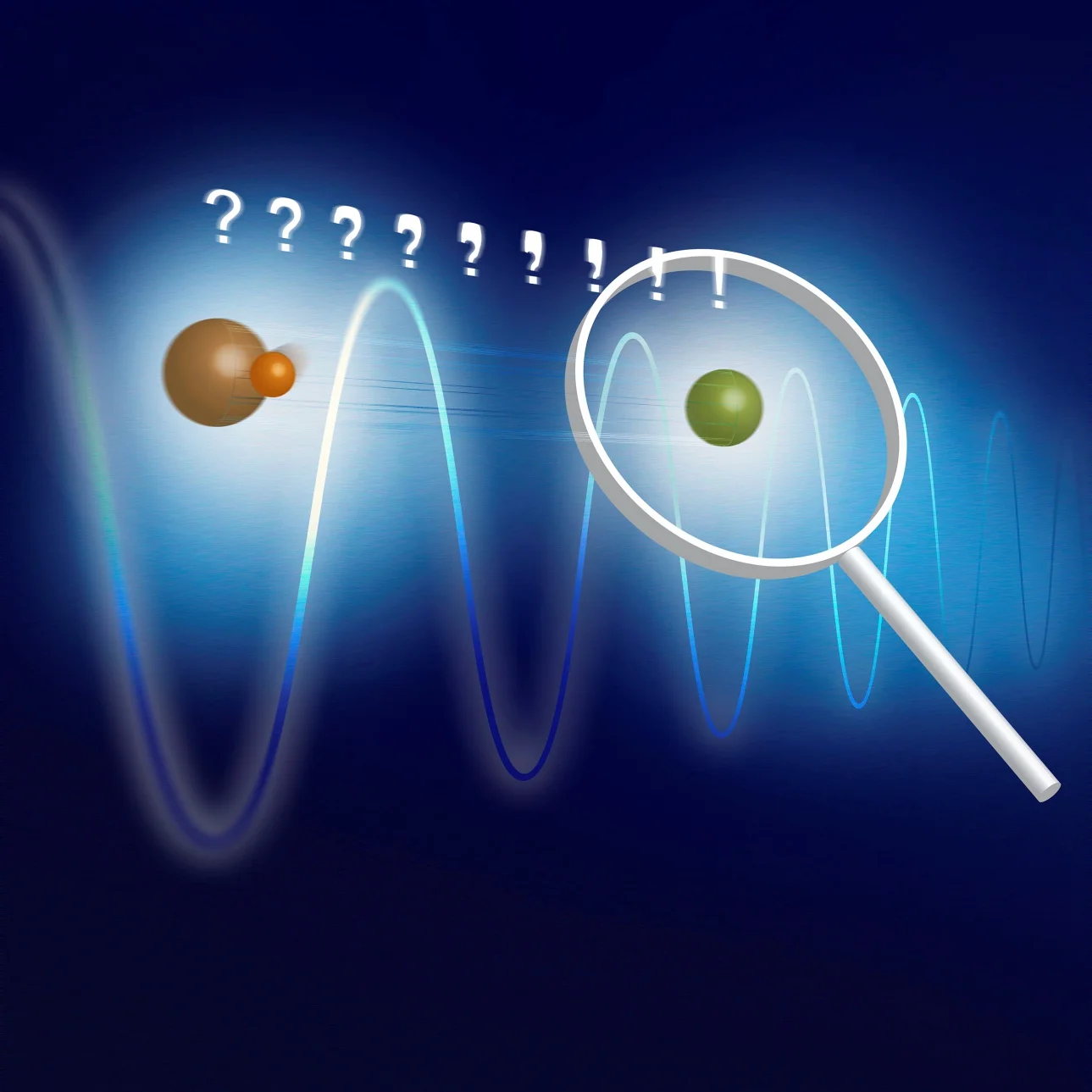In this lesson, we'll mathematically prove that for any Hermitian operator (and, hence, any observable), one can always find a complete basis of orthonormal eigenvectors. That is to say, a set of basis vectors which spans Hilbert space and which are orthogonal and normalized. We'll start off by proving that for any pair of eigenvectors of any Hermitian operator whose eigenvalues are unequal, it necessarily follows that those eigenvectors must be orthogonal. Any pair of eigenvectors of a Hermitian operator whose eigenvalues are equal are not necessarily orthogonal; but the catch is that, using the Gram-Schmidt procedure, one can always construct two orthonormal eigenvectors from them. In the end, everything works out and we're always able to find a complete basis of orthonormal eigenvectors of any observable. An important consequence of everything mentioned is that, I'll repeat again, any ket vector (which is to say, any state vector) can be represented as a linear combination of eigenvectors.
Let \(|A_{λ_m}⟩\) and \(|A_{λ_n}⟩\) be any two eigenvectors of any Hermitian operator \(\hat{H}\). These could, for example, be the eigenvectors of any observable \(\hat{L}\) since, according to first principles, any observable is Hermitian; although we shall restrict our analysis to any pair of eigenvectors of any observable since it is ultimately observables which are physically interesting, keep in mind that the proceeding analysis applies to any Hermitian operator, not just observables. It follows, by deffinition, that
$$\hat{L}|A_{λ_m}⟩=λ_m|A_{λ_m}⟩\tag{1}$$
$$\hat{L}|A_{λ_n}⟩=λ_n|A_{λ_n}⟩.\tag{2}$$
Let's take the Hermitian conjugate of both sides of Equations (1) and (2) to get
$$⟨A_{λ_m}|\hat{L}=λ_m⟨A_{λ_m}|\tag{3}$$
$$⟨A_{λ_n}|\hat{L}=λ_n⟨A_{λ_n}|.\tag{4}$$
As a reminder: since the eigenvalues \(λ\) of any observable \(\hat{L}\) must be real, it follows that \(L=L^*\); and since any observable is Hermitian, it follows that \(\hat{L}=\hat{L}^†\). Let’s multiply both sides of Equations (2) and (3) by \(⟨A_{λ_m}|\) and \(|A_{λ_n}⟩\), respectively, to get
$$⟨A_{λ_m}|\hat{L}|A_{λ_n}⟩=λ_n⟨A_{λ_m}|A_{λ_n}⟩\tag{5}$$
$$⟨A_{λ_m}|\hat{L}|A_{λ_n}⟩=λ_m⟨A_{λ_m}|A_{λ_n}⟩\tag{6}$$
Subtracting Equation (6) from (5), we have
$$⟨A_{λ_m}|\hat{L}|A_{λ_n}⟩-⟨A_{λ_m}|\hat{L}|A_{λ_n}⟩=0=(λ_m-λ_n)⟨A_{λ_m}|A_{λ_n}⟩.$$
If the two eigenvalues are unequal (\(λ_m≠λ_n\)), then \(⟨A_{λ_m}|A_{λ_n}⟩=0\). The inner product is analogous to the dot product, but it is extended to arbitrary different spaces and numbers of dimensions. If the inner product between two vectors is zero, then they must be orthogonal. Thus, for any pair of eigenvectors of any observable whose eigenvalues are unequal, those eigenvectors must be orthogonal. We proved this only for eigenvectors with different eigenvalues. Next, we'll show that even if two eigenvectors have the same eigenvalue and are not necessarily orthogonal, we can always find two orthonormal eigenvectors.
Suppose that we have two eigenvectors \(|A_λ⟩\) and \(|B_λ⟩\) of an observable \(\hat{L}\) which have the same eigenvalue \(λ\):
$$\hat{L}|A_λ⟩=λ|A_λ⟩$$
$$\hat{L}|B_λ⟩=λ|B_λ⟩.$$
In general, these two eigenvectors are not orthogonal. However, according to Principle 4 (which we covered in the lesson, Fundamental Principles and Postulates of Quantum Mechanics), they represent the distinct states that a quantum system can end up in after \(\hat{L}\) is measured. Therefore, the two eigenvectors \(|A_λ⟩\) and \(|B_λ⟩\) must be linearly independent. We shall prove that for any two eigenvectors \(|A_λ⟩\) and \(|B_λ⟩\) of \(\hat{L}\) with the same eigenvalue \(λ\) (which in general are not orthonormal), we can always construct two new eigenvectors (from \(|A_λ⟩\) and \(|B_λ⟩\)) using the Gram-Schmit procedure) of \(\hat{L}\) with the same eigenvalue \(λ\), and both span the same subspace as \(|A_λ⟩\) and \(|B_λ⟩\). The first step in demonstrating this proof will be to show that any linear combination of \(|A_λ⟩\) and \(|B_λ⟩\) (which we can write as \(|C⟩=α|A_λ⟩+β|B_λ⟩\)) is also an eigenvector of \(\hat{L}\) with the same eigenvalue \(λ\).
This article is licensed under a CC BY-NC-SA 4.0 license.


